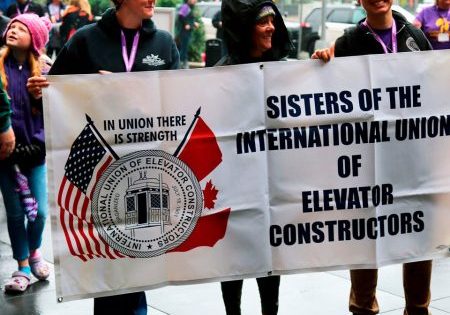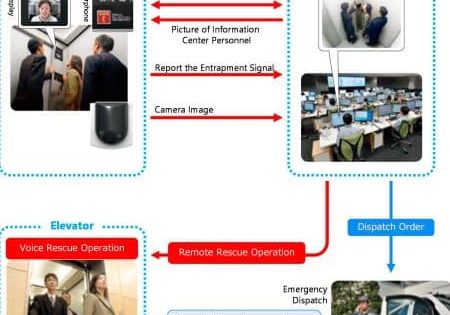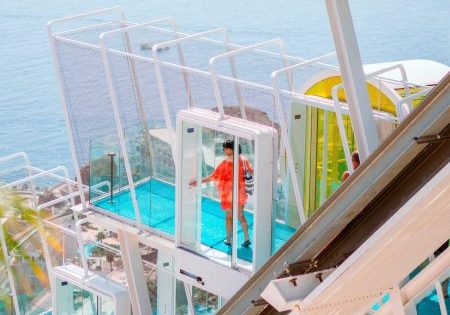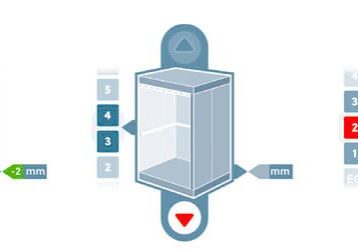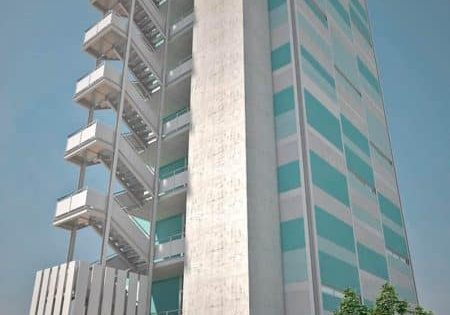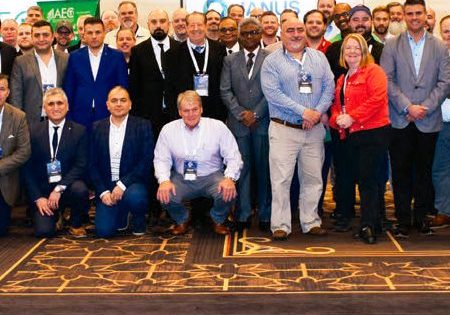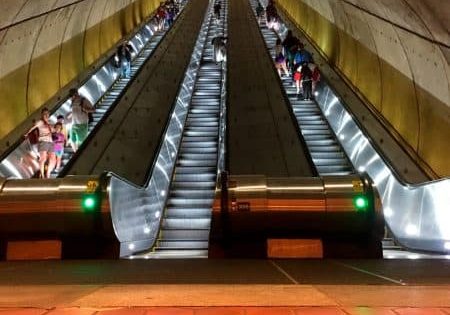Inspection and certifcation bodies take the lead
by Manuel Díez
This article was frst presented at the 2019 International Elevator and Escalator Symposium in Las Vegas. For more information on December 7-8, 2020’s event in Amsterdam and to participate, visit www.elevatorsymposium.org.
With more than 16 million installations worldwide moving the equivalent of the whole population of the planet at least once a day, elevators and escalators are the world’s safest mode of transportation. That said, the industry is, unfortunately, not free of accidents and incidents — the majority of them afecting its own employees.
However, accidents are relatively easy to avoid or, at least, reduce in number, by achieving a tolerable level of risk through various means: safe design for all lifecycle phases, good product quality, education and training of employees to perform the tasks and having an independent third party inspecting the equipment.
The role of inspection and certifcation bodies has been fundamental in reducing the number of incidents in Europe. The certifcation of safety components for elevators and escalators, the commissioning of those machines and the periodic inspection through an independent third party have increased the safety of new and existing elevators and escalators across diferent countries and continents, and international standards are widely accepted.
There is still much to do in this area, and we should start by compiling and summarizing the diferent existing certifcation schemes for components and elevators, the current initial inspection schemes, the applicable standards and models and the periodic or in-service inspection schemes worldwide, comparing their depth, periodicity and challenges.
International standardization committees are well aware of the need to have clear rules that guide the manufacturer, maintainer, operator and user to the safe design, manufacture, installation, maintenance and use of elevators and escalators. Eforts to globalize the technical improvement will also be addressed in this article.
The future is bright for the industry as the population continues to grow. Urbanization continues, the megacities are almost here and the aging population demands enhanced accessibility and safety of existing elevators and escalators.
People in Movement — Some Data
Elevators, escalators and moving walks have been part of our daily lives for many years. For many of us, it is common practice to get into an elevator or jump on an escalator several times a day. In fact, the industry claims to move the equivalent of the whole world’s population more than once a day, using the more than 16 million devices installed worldwide. And, there are more coming, as new installations are expected to grow over 4% in the next years. While Europe still has the biggest base of existing equipment, China is catching up. Despite its “reduced” economic growth, China has been the location of up to 60% of the total new installations in the last two years.
The construction of taller residential and commercial buildings is booming, with a focus in the Middle East and South Asia. The megacities trend is going at full speed now, due to the huge increase of urban populations (more than two-thirds of the global population), and, therefore, more vertical- transportation equipment is manufactured, shipped and installed, as it is both required by many regulations and seen as a necessity by the users of these buildings.
The high rises going up around the world — getting higher and higher every year — also force the elevator and escalator industry to create more innovative solutions to achieve the speed, comfort and safety required by the owners, authorities and users. Signifcantly, elevators are now even being considered as another element of building-evacuation plans.
The aging population in Europe now demands the installation of elevators, lifting platforms and chairs in existing buildings — some of them with very complicated technical specifcations. Accessibility demand is on the rise and means an exponential increase in business for small and medium-sized manufacturers and installers.
Accordingly, the elevator industry is steadily growing and requiring more standard safety solutions, while the local and individual needs of each building require quite the opposite. The “batch of one” concept, favored in the move to Industry 4.0, survives here.
While the demands on speed and availability grow among users, safety is taken for granted by a vast majority of them — partly because of the general view that laws, regulations and authorities are taking care of it. They are partly right, because most of the products have been designed to be safe (via regulation) using widely accepted or mandatory standards, being tested by third parties and periodically maintained and inspected. Together, this makes this sector the safest among all transportation industries, counting far fewer accidents involving users than any other mode of transportation (a hundredth or a thousandth), not creating a “social alarm.” Moreover, it will continue being safe as long as good practices (design, installation, inspection, maintenance and modernization) are followed and performed by specialists combining the knowledge and experience needed to deal with an 80-year-old elevator in Barcelona’s city center or the newest technology installed in the Burj Khalifa.
Nevertheless, accidents do happen in this industry. Though it is difcult to get a reliable fgure about them, this does not make them and their consequences disappear. In addition, the limited statistical data we have available (some countries in Europe are reporting centrally) shows users are only involved in 20% of the fatal accidents, while those of us in the industry carry the remaining 80%.
For the regular elevator user, the most common accident cause is tripping (due to lack of car leveling at a landing). The second is being crushed or hit by doors (due to the door closing at a high speed or acceleration, with the consequence of falling or entrapment). The third accident cause is the uncontrolled movement of the cabin, with the same consequences. The rest of the accidents have diferent causes, such as door-locking systems malfunctioning (falling into the pit), entrapment after self-evacuation, hits against walls (lacking car doors) and entrapment in accessible elevator pits (old elevators). Regardless of the cause of the accidents, all the consequences are aggravated if the elevator is lacking a bidirectional emergency communication system, as the persons cannot request the needed help.
For installation and maintenance personnel, despite all the safety measures, falling with the car is still the main cause of accidents, followed by falling in an open pit and entrapment. All accidents share a root cause of negligence and not following the safety procedures given.
Standards for Safe Design (and Operation) – ASME, EN, BSLJ, IEC, ISO
Elevators and escalators were, at the beginning, purely mechanical lifting equipment, which, with the advent of electricity, were ftted with an electrical engine and circuitry to control them. The frst safety standards, in the early 1920s, focused on switches and speed control, but the frst safety elements were safety brakes (invented 80 years before), door- locking mechanisms, etc. The American Society of Mechanical Engineers (ASME) developed codes for all kinds of lifting equipment, including elevators.
While many standards are available and regularly updated, they cannot always keep pace with manufacturers’ technical innovation and evolution. The diferent standardization committees are always trying to incorporate the state-of-the-art technologies and solutions available in the market, writing design processes and calculations, procedures and tests to make safe use of all of them. Safe installation and maintenance have also been considered within the standards to protect feld employees in their daily tasks.
Guides, steel structures, drums, hoists, ropes, measurements, materials, overspeed governors, safety gears, counterweights — all these elements have been included in the standards and codes, as they are directly involved in the safe functioning of an elevator. Started by the manufacturers and maintenance companies and more recently including other stakeholders of the industry (safety component manufacturers, parts manufacturers, inspection and certifcation bodies, accreditation bodies and international authorities), the diferent standardization committees worked out new and better versions of all standards.
It was not that long ago that electronics came around to the industry, moving it forward as has happened in many other areas of our daily lives. Software followed soon after, with a few lines of code controlling the functioning of the vertical transportation, more recently including the ability to remotely monitor and operate an elevator or escalator. With these new developments, the work for the standardization committees exploded and became more difcult, as they were not handling mechanical components anymore, but quite diferent elements (such as programmable electronic system in safety-related applications for lifts).
Through the years, the ASME code has come from the U.S., EN standards from Europe and BSLJ codes from Japan. Some attempts from the International Electrotechnical Commission and International Organization for Standardization committees, have standardized the safe, efective and efcient design, manufacturing, testing, operation and maintenance of an elevator in almost all parts of the world. This has been the status quo for decades, due to some regional developments, features and characteristics (like electrical networks, frequencies, voltages and access to some materials) and sometimes just derived from cultural diferences (language, sense of safety and awareness).
However, about 10 years ago, the diferent committees started to align and agree upon some general directives when amending or developing standards for elevators and escalators. With the introduction of the new EN 81 series, especially EN 81-20 and -50, the approach has been so signifcant that, in the next three years, all main schemes (ASME, BSLJ and EN) will converge in the new ISO 8100 series of standards. This will make the elevator industry one of the frst, if not the frst, to have only one set of safety standards applicable worldwide, for more than 50 countries around the world — all of which are participants and/or observers of the endeavors of the technical committee ISO/TC 178.
The evolution of such standards and the commitment of the industry to stick to them have brought an essential reduction of the risk involved in the installation, operation, inspection, maintenance and use of an elevator or escalator. The tolerable levels of risk have been reduced during the years, and the residual risks of new products are relatively low.
However, accidents still occur. Even if the standards have been around for a long time, and even if the asset is designed to be safe, ensuring that safety aspects are “controlled” over the life of the elevator is difcult by standards alone.
EU Directives and the NBs, Other Regulations, NRTLs and the Certifcation of Components
Standards and norms (“as a set of requirements established by authority, custom or general consent as a model, or as example, serving to guide, control or regulate a technical area”) are proved essential but not sufcient. While the standards establish the technical framework and are developed by technical experts, there must be another framework setting the character of them as mandatory or compulsory, or advisory or voluntary. The introduction of national laws requiring the industry to adhere to some of those standards made extensive use of them possible. Many of those national laws, starting in the mid-1930s, also required the administration, the local authority or an inspection body (third party) on their behalf to control the products placed on the market, and check the quality and safety of the elevators installed. Sometime later, it became clear that during the lifecycle of this machinery, some periodic maintenance and inspection were also required. Because, while many committed to fulfll the quality and safety criteria, it was not always the case for all the stakeholders in the feld.
In the case of Europe, shortly after signing the frst of the European treatment, many directives came into force for all the European Union (EU) countries, one of them being the Lifts Directive (LD), which, since 1995, has explicitly required the CE-marking of all new elevators placed into the EU market. It establishes a set of procedures to “mark” an elevator, place it into the market and commission it for the frst time, introducing the fgure of the Notifed Body (NB). The NB is an independent (from the owner, manufacturer and designer) organization designated by an EU member state to assess the conformity of the products, before they are placed on the EU market, as having the essential technical requirements and safety features. All those requirements are described in the so-called harmonized or non-harmonized standards. While the fulfllment of all technical requirements of a harmonized standard ensures compliance with the directive, it opens the door to the introduction of innovations not described in the standards. An NB must nevertheless check them before a product is placed on the market, to grant at least the equivalent level of safety with the existing and “traditional” solutions. With this “Deviation from Standard” certifcate, the manufacturers can include the most state-of-the-art solutions for traction ropes, but also use diferent approaches when the spaces (pit or machine room) in existing buildings do not meet the essential safety requirements.
The original directive 95/16/EC and the “new” directive 2014/33/EU of the European Parliament and of the council on the harmonization of the laws of the member states relating to lifts and safety components for lifts established the conformity- assessment procedures for both safety components and lifts. Accordingly, there are two main ways to commission an elevator — either by involving an NB in the inspections for elevators having an EU-type examination, or unit verifcation, for one-of designs.
The frst is used for “standard” elevators, using standard certifed components and pertaining to a family of products, while the second is mostly used when introducing special features due to the installation conditions of a building.
The introduction of the certifcation bodies has been fundamental in reducing the number of incidents and accidents in Europe. The certifcation of (safety) components for elevators and escalators, the commissioning of those machines and the periodic inspection through an independent third party have increased the safety of new and existing elevators and escalators across diferent countries and beyond the EU, as those certifcates are widely accepted in the rest of the world.
It is worth saying that the LD does not cover escalators or moving walks. These are covered by the Machinery Directive (2006/42/EC), together with the harmonized and widely accepted standard EN 115-1, and using the same scheme as described before.
By authorizing organizations such as NBs, and not individuals, to grant the safety design and manufacturing of components and lifts, the EU tries to avoid any kind of infuence, dependency or partiality when judging and assessing the required quality and safety of the products.
In contrast, in the U.S., this role is taken over by the National Recognized Test Laboratories (NRTLs), which is also accredited under national law to perform the testing and certifcation of elevators and safety components using the existing ASME code.
However, controlling only the initial quality of a product has proved not to be sufcient to certify safety throughout the life of the assets. Therefore, countries maintain national regulations for the periodic inspection of elevators and escalators.
And, fnally, yet importantly, as the technical progress and trend is to include more programmable systems, electronic hardware, software and frmware (programmable electronics) are now part of every new elevator installed around the world, and its safety applications. It is now the obligation of both the standardization committees and lawmakers to reach an agreement about the necessary assessment to be performed on those elements during its whole lifecycle.
Inspection Bodies Versus Accredited Individuals Versus Experts
As we have seen before, the European Commission (EC) established the method to place an elevator or escalator on the market by transposing the directives into the national laws, in accordance with the main procedure. Once the product is installed and in use within a member state, the national law becomes applicable (as with any country).
Here lies the main diferences about the intensity and depth of both maintenance and independent inspection required to keep the safety level high and residual risks low. No matter how good the product was when it was placed in the market, it remains clear there must be regular maintenance to keep any machinery up and running safely. Many countries around the world have introduced both maintenance and independent in-service inspection regimes and made them mandatory by law. In several of those cases, there is not one single regulation across the country, but several in place. This is especially the case in large countries that are historically and legally split into federal states, regions, councils, communities, etc.
While most of the EU countries, following the scheme of the EU and its directives, rely on independent organizations to perform inspections, some use single inspectors or experts. Some still use state-driven organizations or agencies, and others do not enforce any kind of inspection.
There are, unfortunately, no reliable statistics showing defects found, incidents or accidents, making it difcult to judge which of the schemes is better in terms of safety for the user and maintainer. However, based on available research, the reduction in the number of accidents is most pronounced when independent, accredited third parties take over the responsibility to check the assets. Accident rates remain constant or increase when the state or state-driven agencies perform the inspection.
In the most common scheme, inspection bodies must hold an accreditation issued by another independent party (accreditation body), usually following the internationally recognized standard ISO 17020, which ensures diferent topics as for:
- Independence from the industry involved (no link with lift designers, manufacturers, maintenance companies, etc.)
- Independence of the body (technical assessment) and staf (non-biased judgment) and employees of the company
- Equal treatment for all clients
- Exclusion of economic and fnancial infuences (i.e., inspectors under an inspection body do not get bonuses based on performance)
- Quality management system and documentation management
- Internal competence system with minimum requirements for education (engineer), operational experience, specialized knowledge and training
- egular experience exchanges, monitoring of inspectors and further technical training
- State-of-the-art technical competence
- Minimum number of experts available (cannot be unipersonal)
- Have adequate insurance for the activity
- Own, maintain and calibrate all measuring equipment needed for the activity
The accreditation body, to ensure the level of quality and performance required by law, regularly checks all those criteria. The above requirements are not only used in Spain, Germany, Luxembourg, Hungary, Latvia or Belgium, but also the Philippines, Chile, Columbia, South Africa and the U.A.E.
As expected, when the national laws apply, there are also some deviations to this common practice, as, for example:
- In Belgium, the inspection body must be a nonproft organization.
- In France, technicians are accepted as inspectors if they have proven experience.
- In Italy, experts do not have to be employees — they can be freelancers — but must work under the quality management system and prove their experience and capability.
- In the Philippines, the accreditation or authorization comes from each municipality, instead of a central organization.
The second main scheme uses personal accreditations for experts performing the inspections. That is the case of the U.S., the U.K., Singapore, India and part of the Middle East (if they have an inspection regime). Usually, inspectors are required to be (mechanical) engineers and have insurance covering inspection activity. They also must have specifc training and pass an examination. Some of those countries require experts to periodically renew the accreditation by paying a fee, retaking training, updating knowledge, getting up-to-date information about state-of-the-art technologies, etc. The outcome of this scheme difers from one country to another, as the monitoring and its intensity by the authority difers.
The third main scheme is used where the public authority is still the only one in charge of the safety inspection, as for China, South Korea, Japan, Malaysia and several other countries. When looking at the statistics available, the news about accidents popping up every now and then and the lack of resources the public sector is enduring around the world, it is clear that some countries sufer more accidents than others.
Finally, there are countries in which the inspection is not performed by a third party, but by the maintenance company itself. Being dependent on each other and having a clear confict of interest with the owner and the user, this is clearly not the best way to ensure safety and quality.
Inspection Type and Periodicity, Inspection Depth and Items
As seen before, diferent national laws address in-service or periodic inspection in diferent ways, with another main diference being the inspection regime and periodicity.
The goal of this periodic inspection should be to detect defects or main alterations since the last inspection that afect the safety of the equipment in use and, thus, require urgent and immediate action.
In most countries with an inspection regime, there is only one type of inspection (main, complete, full-range or overall), while in others, an intermediate inspection (light inspection, limited depth, without the maintenance company) is also considered (Germany), and even an inspection of maintenance activities is demanded (Hungary). Some countries also require an inspection when the maintenance company changes, to be used as an “Expert’s Report,” avoiding the new company taking over activities derived of the poor maintenance practice before and vice versa.
The periodicity of the inspections also varies a good deal worldwide, and, while in many countries the regime states one inspection every year (within 11 and 15 months of the last inspection, currently in place in Luxembourg, France, Belgium, China, the Philippines, South Africa and U.A.E.), some countries have a tighter requirement (every six months, alternating main and light inspection, like Hungary). There are also other countries, such as Italy, where the main inspection is required only every two years. On the other end, we fnd Spain, where the inspection of over 1 million lifts is required based on the use of the building. Therefore, inspection is every two years for public premises and commercial buildings, every four years for residential buildings serving six or more foors and every six years for residential buildings under six foors.
In many cases, the laws also defne the term “modernization” (changes made to more than 60% of the elevator or main parts) and require an inspection by an independent third party after main refurbishments and updates, or when changing any of the safety components installed. (This is the case for all EU member states.)
In many countries, the currently contracted maintenance company must be present when the inspector performs the inspection, to support and collaborate by operating the elevator, triggering the safety systems to be tested and, in many cases, performing small actions to leave the elevator working when the process is ready.
The inspection depth and items have less variability across the diferent regulations worldwide. With such similar technical standards, requirements by law and solutions, a broader consensus is found here, where the three main parts are always present: a documental review, onsite inspection and a report.
The frst is usually required to prove that the relevant technical documentation is available (both to the owner and maintenance company), that a special focus is placed on deviations from standard, that there is a maintenance log updated and that the last inspection report is also available (to check previous deviations and the solutions applied).
The onsite inspection covers diferent blocks as follows, where the inspector performs visual or functional inspection, as well as some measurements (for electric elevators):
- General topics (lighting, ventilation, obstacles, access, rescue procedure, clearances and ride quality)
- Pit (confguration, protection screens, rope-tensioning pulleys, drainage, refuges and emergency doors/elements, bufers and limit switches)
- Counterweight (guides and general condition)
- Guides
- Car (walls, ceiling, apron, leveling, control panel and display, roof protection and inspection controls, guide shoes or rollers, and the emergency communication system)
- Landing doors and car doors (locking devices, safety features, emergency unlocking devices, closing speed, acceleration and force)
- Suspension system (ropes and fxings, overspeed governor, safety gear, rotating parts, traction and safety devices to prevent unintended car movement)
- Machine room (winch/gear, pulley, brake, uncontrolled movements)
- Electrical installation and controls (main switch, overcurrent/ thermal protection, grounding, emergency stops, phase reversal, overload device and electronic stamp or checksum)
- Marking and operation instructions (content and usability)
In the onsite inspection, we fnd the major diference across the diferent regulations regarding the obligation to use weights to test the functionality of safety elements. There are diferent approaches, such as:
- Obligation to test with weights in the car (France, Hungary and the Philippines)Obligation to test with weights or an approved simulation system (Germany)Obligation to test with weights unless the inspector considers it unnecessary (Italy, Spain)
- No obligation to use weights (China, Belgium and South Africa)
The inspector must evaluate the inspection results and write a report after both the documental review and onsite inspection. The diferent countries’ laws usually explain and describe the classifcation of the fndings (minor, major or critical), the actions derived (stop the equipment, further use or provide a date to remedy the defciencies), the communication procedure (to the authority or administration, owner or maintenance company) and the administrative process afterward.
As an example, in 2017 in Germany, 0.6% of the elevators inspected were put out of service right after inspection, as they presented critical defects for the safety of users or maintenance personnel.
Conclusions and Takeaways
The machine might look simple — steel box on rails, moving up and down within an enclosure — but it was never simple, and it has continued to evolve into a very complex transportation means — sensorized, connected, with complex electronic controls and safety systems, and using state-of-the-art technology.
We have seen that the elevator and escalator sector is promising regarding business and activity, as the urban population keeps growing, and the need for vertical- transportation means is seen as a commodity and obligation by the aging population.
There are still accidents with the safest transportation system available nowadays. These mostly afect workers within the industry, and it is the commitment of all stakeholders to increase the safety, availability and accessibility of elevators and escalators.
It has been proven that standardization has played a major role in safety and the reduction of accidents, heading now to a global acceptance of the main ones, and always trying to keep pace with innovation. Nevertheless, it is also true that only with laws enforcing the use of these safety standards and a system to control the application of the right standards in the design, construction, installation and maintenance of elevators and escalators, can the goal be achieved.
Finally, and to control the existing elevators, with nothing less than an inspection system, with the needed type, periodicity and depth, run by independent professionals with the necessary skills and knowledge, can we maintain the required and expected level of safety and reduce the number of accidents. Those professionals, whether under the umbrella of an inspection body or as freelancers, must be monitored, maintain the technical level and learn the state-of-the-art solutions available in the market. And so, we all welcome the progress made in Saudi Arabia, Argentina and Chile in recent years, and encourage all other countries to enforce an inspection regime and ensure the safety level we all take for granted.
References
[1] CEOC International (International confederation of inspection and certifcation organizations).
[2] European Lift Association.
[3] Federación Empresarial Española de Ascensores.
[4] Federación Española de Organismos de Control (FEDAOC).
[5] American Society of Mechanical Engineers.
[6] National Elevator Industry, Inc.
[7] Verband des TÜV.
[8] Otis.
[9] KONE.
[10] thyssenkrupp Elevators.
[11] www.ascensores-montacargas.com.
[12] CEN/TC 10 – Public information and reports about current standardization.
[13] ISO TC 178 — Public information and reports about current standardization.
[14] CiC. “Informe del Sector de Elevación,” (January 2019).
Get more of Elevator World. Sign up for our free e-newsletter.


